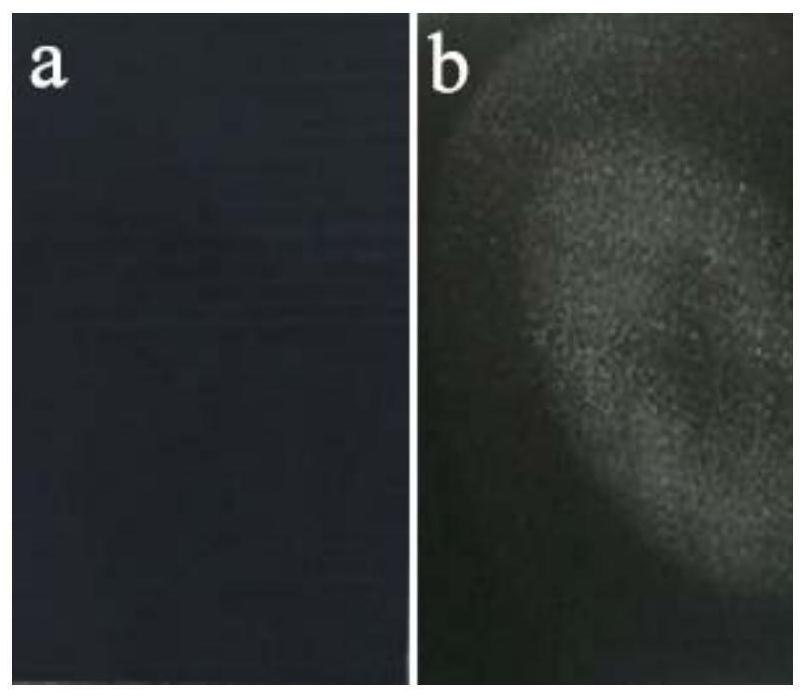A kind of low-temperature low-alkali metal lead-free glaze and its preparation process
An alkali metal, low temperature technology, applied in the field of low temperature and low alkali metal lead-free glaze and its preparation process, can solve the problems of harmful health of users and easy precipitation of lead, and achieves improved fluidity, improved acid corrosion resistance, and reduced thermal expansion. The effect of coefficients
- Summary
- Abstract
- Description
- Claims
- Application Information
AI Technical Summary
Problems solved by technology
Method used
Image
Examples
Embodiment 1
[0016] Weigh ZnO 55%, B 2 o 3 18%, SiO 2 17%, Al 2 o 3 6%, BaO 4%, mixed evenly, put it in a muffle furnace to raise the temperature to 1230°C at 5°C / min, keep it warm for 30 minutes, then pour the molten glass into cold water to quench to obtain a glass frit. Then, the dried glass frit was ball milled at a speed of 80 rpm for 40 hours using a ball mill. Then the ball-milled slurry was filtered into a beaker with a filter screen, and dried at 100°C. Finally, pass the dried glass powder through a 300-mesh sieve to obtain low-temperature lead-free glass powder. Then weigh 24 parts of potassium feldspar, 9 parts of quartz, 45 parts of low-temperature lead-free glass powder, 10 parts of talc and 12 parts of limestone according to the formula percentage of low-temperature low-alkali metal lead-free glaze. Use alumina balls as grinding balls, use absolute ethanol as solvent, material: ball: solvent = 1:4:2, and large ball: medium ball: small ball = 1:1:1, then put the ball m...
Embodiment 2
[0022] Weigh ZnO 30%, B 2 o 3 22%, SiO 2 30%, Al 2 o 3 10%, BaO 5%, TiO 2 3%, mixed evenly, placed in a muffle furnace to raise the temperature to 1230°C at 5°C / min, keep the temperature for 30 minutes, then pour the molten glass into cold water to quench to obtain a glass frit. Then, the dried glass frit was ball milled at a speed of 80 rpm for 40 hours using a ball mill. Then the ball-milled slurry was filtered into a beaker with a filter screen, and dried at 100°C. Finally, pass the dried glass powder through a 300-mesh sieve to obtain low-temperature lead-free glass powder. Then weigh 20 parts of potassium feldspar, 7 parts of quartz, 54 parts of low-temperature lead-free glass powder, 9 parts of talc, and 10 parts of limestone according to the percentage of the low-temperature lead-free glaze formula. Use alumina balls as grinding balls, use absolute ethanol as solvent, material: ball: solvent = 1:4:2, and large ball: medium ball: small ball = 1:1:1, then put th...
Embodiment 3
[0025] Weigh ZnO 47%, B 2 o 3 20%, SiO 2 22%, Al 2 o 3 5%, BaO 6%, mixed evenly, placed in a muffle furnace to raise the temperature to 1230°C at 5°C / min, keep it warm for 30 minutes, then pour the molten glass into cold water to quench to obtain a glass frit. Then, the dried glass frit was ball milled at a speed of 80 rpm for 40 hours using a ball mill. Then the ball-milled slurry was filtered into a beaker with a filter screen, and dried at 100°C. Finally, pass the dried glass powder through a 300-mesh sieve to obtain low-temperature lead-free glass powder. Then weigh 22 parts of potassium feldspar, 7 parts of quartz, 52 parts of low-temperature lead-free glass powder, 9 parts of talc and 10 parts of limestone according to the formula percentage of low-temperature low-alkali metal lead-free glaze. Use alumina balls as grinding balls, use absolute ethanol as solvent, material: ball: solvent = 1:4:2, and large ball: medium ball: small ball = 1:1:1, then put the ball mi...
PUM
| Property | Measurement | Unit |
|---|---|---|
| hardness | aaaaa | aaaaa |
Abstract
Description
Claims
Application Information
 Login to View More
Login to View More - R&D
- Intellectual Property
- Life Sciences
- Materials
- Tech Scout
- Unparalleled Data Quality
- Higher Quality Content
- 60% Fewer Hallucinations
Browse by: Latest US Patents, China's latest patents, Technical Efficacy Thesaurus, Application Domain, Technology Topic, Popular Technical Reports.
© 2025 PatSnap. All rights reserved.Legal|Privacy policy|Modern Slavery Act Transparency Statement|Sitemap|About US| Contact US: help@patsnap.com


